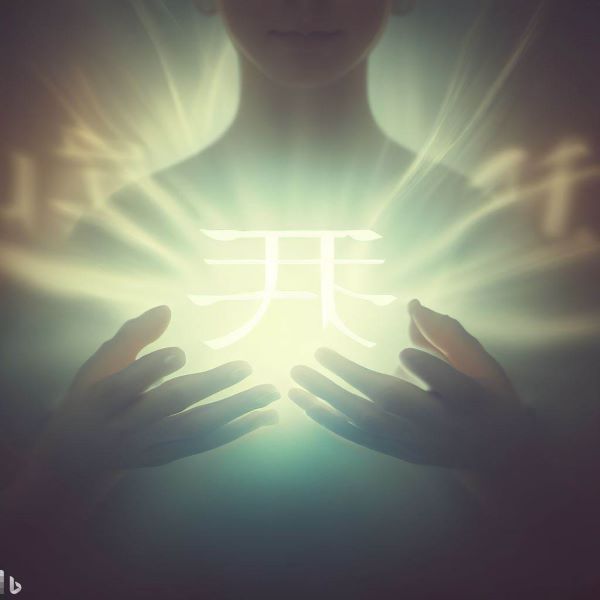In a world that constantly pushes us to keep up with the fast-paced demands of modern living, finding moments of tranquility and healing has become more essential than ever. Amidst the rush, there exists a gentle and profound alternative healing practice known as Reiki. Rooted in ancient Japanese tradition, Reiki has emerged as a popular complementary therapy that seeks to restore balance and well-being through the channeling of universal life force energy.
Embarking on a journey into the realm of Reiki unveils a world of healing that extends beyond the physical realm, touching the depths of our emotions, mind, and spirit. In this article, we will delve into the essence of Reiki, exploring its principles, techniques, and the profound impact it can have on our lives.
Also, Read What is Acupressure: Principle, Techniques, Uses, Benefits, Treatment
What is Reiki?
Reiki, pronounced “ray-key,” is an ancient Japanese healing art that dates back to the early 20th century. It was rediscovered by Mikao Usui, a Japanese Buddhist monk, who sought to understand and access the healing energies that have been utilized by ancient healers for centuries. The term “Reiki” itself is a fusion of two Japanese words: “Rei,” meaning “universal,” and “Ki,” representing the life force energy that flows through all living beings.
At its core, Reiki is a non-invasive, hands-on healing technique that aims to balance and harmonize the flow of energy within the recipient’s body. The practitioner acts as a conduit, tapping into the limitless reservoir of universal energy and directing it to the areas where it is most needed.
The Principles of Reiki:
Central to the practice of Reiki are the Five Reiki Principles, also known as the Five Reiki Precepts or the Five Reiki Affirmations. These principles serve as a guiding philosophy, encouraging practitioners to cultivate a positive and compassionate mindset, enhancing the effectiveness of the healing energy. They are as follows:
- Just for today, I will not be angry.
- Just for today, I will not worry.
- Just for today, I will be grateful.
- Just for today, I will do my work honestly.
- Just for today, I will be kind to every living thing.
These principles not only influence the healing sessions but also resonate in the practitioner’s daily life, promoting mindfulness, self-awareness, and empathy.
History of Reiki
The origins of Reiki can be traced to Japan in the early 20th century. It was created by Mikao Usui, a Japanese Buddhist monk. On August 15, 1865, Mikao Usui was born in Japan’s Yamagata Prefecture. Although he was raised in a Tendai Buddhist family, he eventually studied other faiths and healing philosophies, such as Shintoism and Christianity. Usui had a strong interest in spirituality and life’s secrets.
After experiencing lots of personal and professional difficulties, Usui set out on a personal journey in search of spiritual awakening and healing talents. He looked for a therapeutic technique that could be used by anyone and was not reliant on one’s religion or cultural beliefs.
On Mount Kurama, a revered mountain close to Kyoto, Japan, Usui attended a 21-day meditation retreat. He is reported to have had a tremendous spiritual awakening and learned about Reiki during this retreat, which took place around 1922.

Usui started practicing healing and teaching Reiki after attaining enlightenment, first in Kyoto and then in Tokyo. To practice his method of healing, he opened a clinic under the name “Usui Reiki Ryoho,” which means “Usui’s Spiritual Energy Healing Method.” Usui mentored several children and created a set of guidelines and practices for Reiki practitioners.
Since then, Reiki has developed further and become more well-known as an additional healing technique all around the world. There are many different branches and lineages of Reiki, each with its unique teachings and methods. In the modern world, people from various backgrounds use reiki to promote relaxation, well-being, and self-healing. Source
Techniques
Reiki utilizes a unique and gentle technique known as “laying on of hands” to channel and transfer healing energy to the recipient. The technique involves the practitioner placing their hands on or slightly above specific areas of the recipient’s body, allowing the universal life force energy (Ki) to flow through them and into the recipient.
Here is a more detailed explanation of the technique used in Reiki:
- Preparation: Before beginning the Reiki session, both the practitioner and recipient typically take a few moments to center themselves and set positive intentions for the healing process. This may involve deep breathing or meditation to create a serene and focused environment.
- Hand Positions: The practitioner uses a series of predefined hand positions, which are usually placed on or near specific energy centers or chakras of the body. These hand positions cover various areas, including the head, neck, shoulders, chest, abdomen, and limbs.
- Gentle Touch: The practitioner gently places their hands on each chosen position, maintaining contact for a few minutes. The touch is usually light and non-intrusive, as Reiki does not involve manipulation or pressure. Some practitioners may choose to hover their hands just above the body if the recipient prefers a no-touch approach.
- Energy Transfer: As the practitioner holds their hands in position, they serve as a channel for the universal life force energy. This energy flows through them into the recipient, promoting a sense of deep relaxation and allowing the body’s natural healing processes to be activated.
- Intuition and Sensitivity: Experienced Reiki practitioners often rely on their intuition and sensitivity to energy to guide them to areas that may need extra attention or where energetic imbalances may be present. They may spend more time on these areas to promote greater harmony and balance.
- Full-Body Session: A typical Reiki session typically covers the entire body, with the practitioner moving systematically through the hand positions, addressing each part of the recipient’s body in a comprehensive and holistic manner.
- Distance Healing: In addition to in-person sessions, Reiki also allows for distance healing, where the practitioner sends healing energy across any distance to the recipient. This method is based on the understanding that energy is not bound by physical space and can transcend time and distance.
Throughout the Reiki session, the recipient may experience sensations such as warmth, tingling, or deep relaxation. Some may even report emotional releases as energy blockages are cleared. The gentle nature of the technique makes Reiki accessible to people of all ages and conditions, making it a versatile and widely practiced form of energy healing.
Treatment: What Happens in a Reiki Session
In the Reiki session, the practitioner starts by introducing themselves, explaining the basics of Reiki, and answering any questions or concerns the recipient may have. They might inquire about the recipient’s overall well-being as well as any specific difficulties they wish to discuss during the session.
The recipient is instructed to sit or lie down in a relaxed position. They are encouraged to unwind and let go of any worry or strain. To set a good intention and establish a connection with the Reiki energy, the practitioner may begin the session with a brief meditation or prayer. In some positions, the practitioner places their hands gently on or just above the recipient’s upper body. The recipient may feel several kinds of sensations, including warmth, coldness, tingling, or mild vibrations, while the practitioner channels the Reiki energy. These feelings, which are typically seen as good, show an energy flow.

Reiki energy induces deep relaxation, which can aid in the reduction of stress and tension. They may play gentle music, dim the lights, and create a soothing environment. Additionally, it might encourage feelings of well-being and assist the body’s natural healing processes. During the session, some clients may experience feelings of emotional release, tranquillity, or calmness. Reiki is believed to encourage holistic healing by operating on a variety of levels, including the physical, emotional, cerebral, and spiritual.
When the session is finished, the practitioner will gently inform the recipient that it is over. They may give some grounding skills or self-care advice. After the treatment, patients are advised to hydrate, rest, and give themselves some time to process the healing. Following a Reiki session, it’s typical to experience feelings of relaxation, regenerated energy, or emotional changes for a few hours or days. Source
Health Benefits of Reiki
- Stress reduction – It is renowned for its capacity to promote deep relaxation and lower levels of tension. The relaxing effects of Reiki can aid in fostering a sense of quiet, enabling the body and mind to achieve balance.
- Pain management – It has reportedly been used to treat pain by minimizing pain. It is believed to work by boosting the body’s natural healing processes and a sense of well-being, both of which may help with pain alleviation.
- Emotional healing – It can enhance emotional healing by assisting in the removal of emotional barriers and encouraging a sense of inner peace. It might help in lowering anxiety, despair, and overwhelming feelings.
- Energy balancing – It seeks to bring the body’s energy system back into balance. Reiki sessions can facilitate the smooth passage of essential life energy and harmonize the energy centers (chakras).
- Promoting Relaxation during Pregnancy: Reiki can be beneficial during pregnancy, providing relaxation and emotional support to expectant mothers.
- Mental Clarity and Focus – It can aid in mental relaxation and foster mental focus. It is frequently used as a strategy to improve mindfulness and decrease mental chatter, enabling people to feel more in the moment and present.
- Immune system support – Some people think that Reiki might strengthen the immune system by encouraging calm and lowering stress. Since prolonged stress can impair immune response, Reiki’s calming effects may support the immune system as a whole.
- Reducing Side Effects of Medical Treatments: Reiki is used to mitigate the side effects of medical treatments such as chemotherapy and radiation therapy, helping patients cope with the physical and emotional challenges.
- Spiritual Development – Reiki is sometimes considered a spiritual practice that may help in one’s personal development. It can strengthen one’s ties to the self, foster a feeling of purpose, and improve general well-being. Source
It’s crucial to remember that while Reiki may benefit many people, it is not a replacement for expert medical care. To enhance and support general health and well-being, it is often used together with traditional medical care. Always get advice from a licensed healthcare practitioner if you have specific health concerns.
Also, Read What are the 7 Chakras – Name, Function, Benefits of Balancing Chakras





